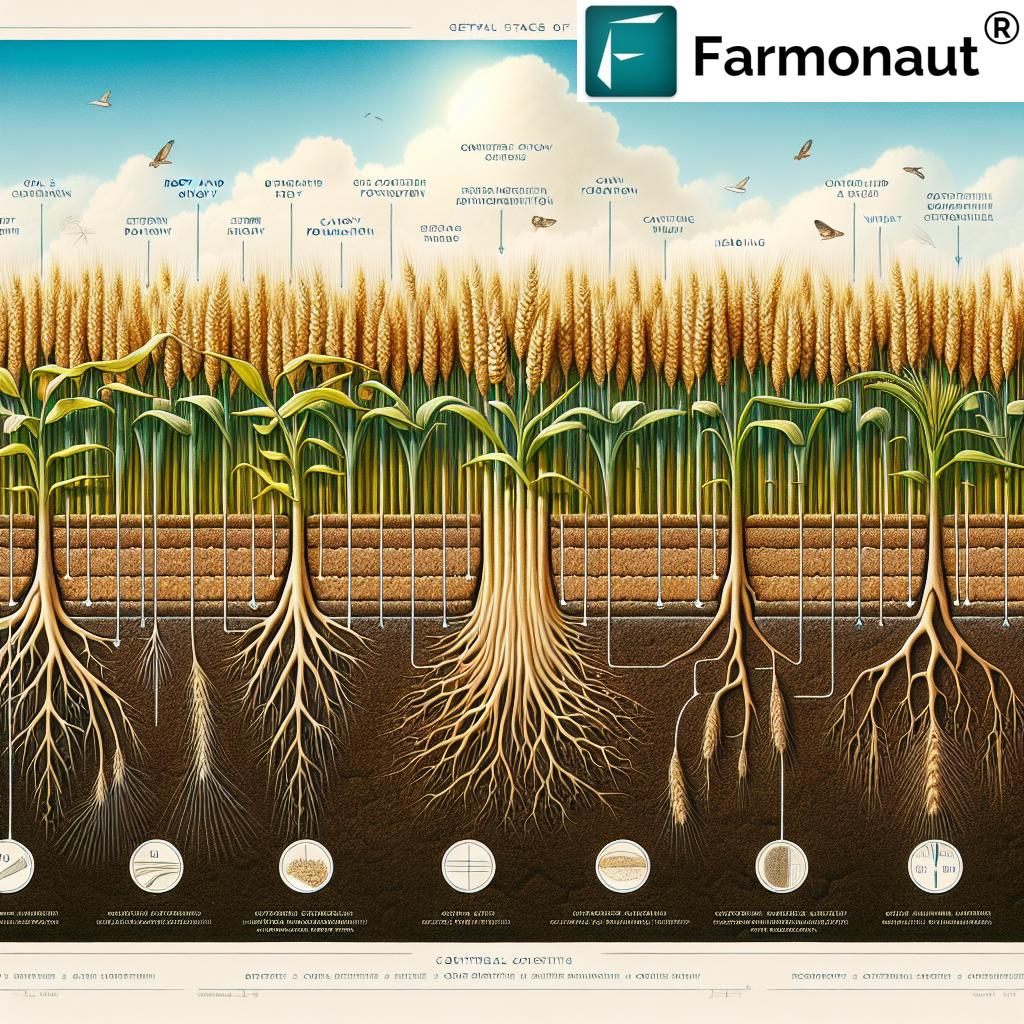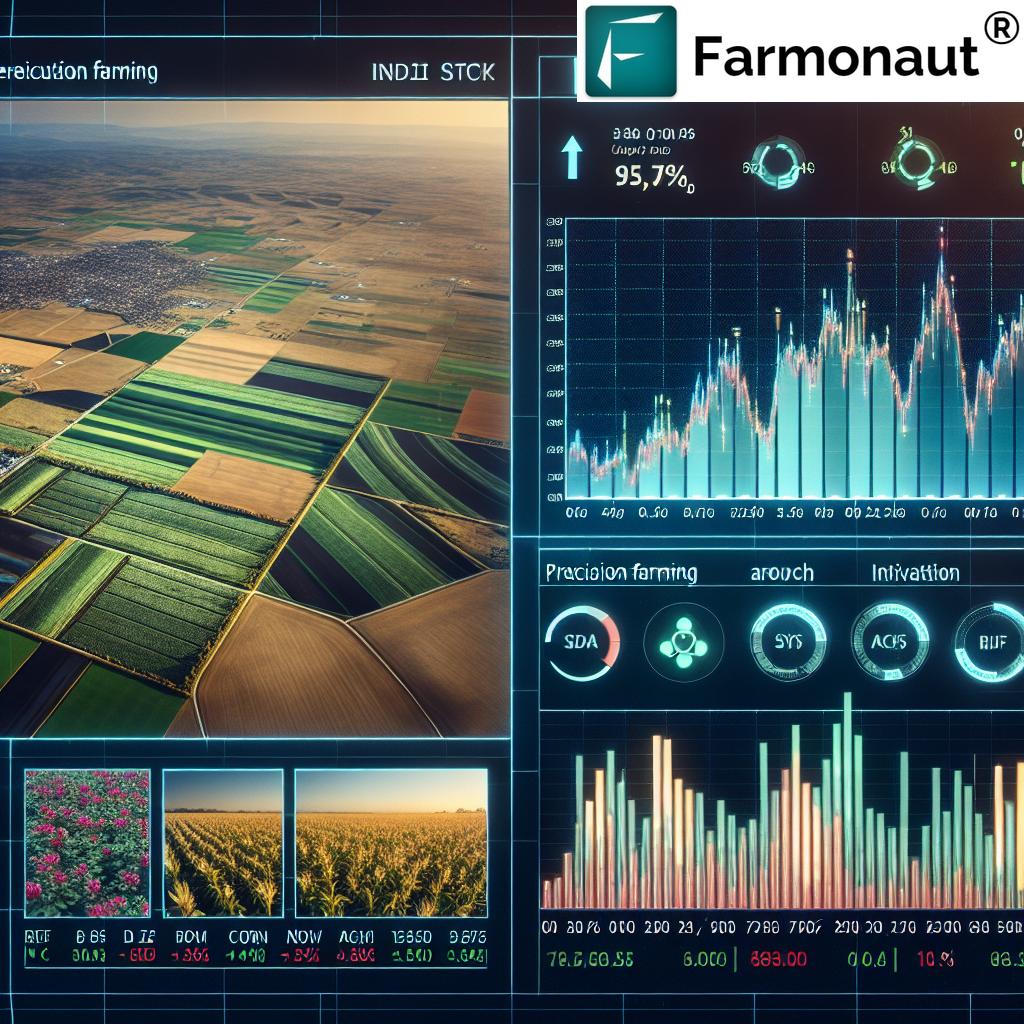Sustainable Urban Gardening: Grants, Plants & Images 2025
Sustainable Urban Gardening: Cultivating Green Spaces in Modern Cities
In 2025, sustainable urban gardening is transforming the landscape of cities worldwide. As populations continue to grow rapidly, our cities face challenges in food security, environmental quality, and community health. Urban gardening—not just a trend, but a crucial practice—is emerging as a solution that adapts traditional agriculture to unique, limited city environments. This article explores the movement through grants, top plant choices, eco-friendly practices, and inspiring urban gardening images. Let’s embark on an in-depth journey highlighting how urban gardening centers, equitable grant opportunities, and advanced technology are redefining green spaces—and how you can join this transformative effort.
Table of Contents
- Unique Trivias about Urban Gardening in 2025
- Why Sustainable Urban Gardening Matters in 2025
- Urban Gardening Grants and Funding: Empowering Communities
- Choosing Plants for Successful Urban Gardens
- Eco-Friendly Practices for Sustainable Urban Gardening
- Urban Gardening Centers and Resources for 2025
- Showcasing Urban Gardening Images and Their Impact
- Top Sustainable Urban Plants & Grant Opportunities for 2025
- How Farmonaut Supports Sustainable Urban Gardening
- Frequently Asked Questions
- Conclusion: The Future of Sustainable Urban Gardening
Urban Gardening in 2025: Did You Know?
“Over 70% of urban gardening grants in 2025 prioritize native plant species for increased sustainability and biodiversity.”
“Cities with community urban gardens see a 40% higher increase in green space per capita compared to cities without them.”
Why Sustainable Urban Gardening Matters in 2025
The modern urban world is evolving at a record pace. As populations grow, limited spaces within cities challenge our ability to provide fresh produce, green spaces, and vibrant communities. Sustainable urban gardening addresses these challenges by maximizing yield and minimizing environmental impact—unlike traditional agriculture, which often relies on sprawling fields and intensive resource use. Instead, urban gardening adapts to unique environments: container gardens, rooftop plots, vertical installations, and balcony planters—innovative solutions for modern constraints.
The environmental and social impact is profound:
- Enhanced food security: Grow vegetables, herbs, and fruits right where people live.
- Improved air and soil quality: Increase carbon sequestration, reduce the urban heat island effect, and promote healthier living.
- Social cohesion: Community gardens foster collaboration, empower residents, and promote inclusivity.
- Urban resilience: Greener cities adapt better to climate change and environmental stresses.
The importance of sustainable urban gardening in 2025 cannot be overstated—it is a movement at the crossroads of agricultural innovation, environmental stewardship, and urban planning.
Urban Gardening Grants and Funding: Empowering Communities
One of the pillars of sustainable urban gardening is access to meaningful funding. Urban gardening grants help bring green spaces to life—especially in cities where infrastructure and personal finances often limit possibilities.
Where Do Urban Gardening Grants Come From?
- Municipal governments: Many city administrations fund gardens, prioritizing sustainability and community impact.
- Environmental organizations: Nonprofits and advocacy groups often support projects for biodiversity, food security, and social equity.
- Agricultural extension programs: University and government-backed programs facilitate knowledge transfer and offer financial incentives.
Key Features of 2025 Urban Gardening Grants
- Equity focus: Many funding bodies prioritize underserved communities, schools, and social housing, ensuring urban gardening opportunities are truly inclusive.
- Diverse support: Grants help finance raised beds, irrigation systems, compost bins, soil improvements, and educational programs.
- Focus on sustainability: Over 70% of grants now require the use of native or drought-tolerant plants and eco-friendly practices.
- Streamlined applications: Digital submissions and interactive portals make it easier than ever to apply in most cities by 2025.
Besides outright funding, some grants offer resource support—supplying seeds, compost, or even technical assistance. Such opportunities empower both individuals and groups, ensuring that even those who might otherwise be financially out of reach can participate in the sustainable urban gardening movement.
Tips for Securing Urban Gardening Grants in 2025
- Clearly outline community benefits: Demonstrate how your project will improve food security, environmental quality, or social inclusion.
- Highlight sustainable practices: Emphasize the use of native plants, organic methods, efficient water use, and recycling initiatives.
- Collaborate with local organizations: Team up with schools, housing associations, and local nonprofits to strengthen your application.
- Utilize digital resources: Many grant programs now have dedicated platforms with guides, sample projects, and interactive application forms for easier access and greater reach.
Note: To maximize your impact, regularly check local government and recognized environmental organization websites for newly announced urban gardening grants.
Need satellite-backed verification for grant eligibility or loan requirements in agriculture? Explore Farmonaut’s Crop Loan and Insurance Verification Solutions—helping financial institutions and urban gardening projects streamline processes and access funding efficiently.
Choosing Urban Gardening Plants: The Key to Resilient Green Spaces
Selecting the right urban gardening plants is a critical factor for maximizing yield, ecological value, and ease of maintenance—especially in the diverse microclimates and limited spaces of city environments.
Characteristics of Ideal Urban Gardening Plants
- Compact growth habit: Plants suited to containers, vertical systems, or roof gardens (e.g., dwarf tomatoes, bush beans, and microgreens).
- Fast maturity: Greens like spinach, kale, and lettuce grow quickly, allowing multiple crops per year.
- Low water needs: Drought-tolerant species are increasingly essential in modern cities facing water restrictions.
- High resilience: Plants that tolerate heat, shade, wind, or disturbed soils thrive in variable urban environments.
- Native or pollinator-friendly species: Support biodiversity and strengthen the local ecosystem while reducing pest pressure.
Popular Urban Gardening Plants in 2025
- Leafy Greens: Spinach, kale, lettuce – quick-growing and nutritious.
- Herbs: Basil, mint, cilantro – perfect for small spaces, kitchens, and balconies.
- Fruiting Plants: Cherry tomatoes, strawberries – high-yield and fun for all ages.
- Root Veggies: Radishes, carrots, and beets – great for raised beds or deep pots.
- Flowers: Marigolds, nasturtiums – improve pollinator visits, beneficial bug populations, and add vibrant color.
Tips for Urban Gardening Plant Selection
- Assess your available space, sunlight, and climate before choosing plants.
- Mix edible and ornamental species for both food and ecological benefits.
- Rely on guidance from your local urban gardening center or digital platforms for regionally optimized plant lists.
- Rotate crops to maintain soil fertility and reduce disease buildup.
Looking for expert digital resources for optimal plant choices? Farmonaut’s Large-Scale Farm Management Platform delivers multispectral insights, helping users analyze soil health, plan crop cycles, and maximize productivity with region-specific data.
Eco-Friendly Practices for Sustainable Urban Gardening
Modern sustainable urban gardening is defined by organic methods, energy efficiency, and closed-loop cycles that minimize waste and optimize resources. Here are leading practices for 2025 and beyond:
- Composting: Turn food scraps and green waste into soil-enriching compost, reducing landfill and improving urban soil quality.
- Water efficiency: Install drip irrigation, harvest rainwater, and choose drought-tolerant plants to maximize every drop.
- Organic pest management: Use companion planting, beneficial insects, and organic sprays instead of synthetic chemicals.
- Renewable energy: Power irrigation pumps or lighting with solar panels.
- Recycling materials: Repurpose containers, palettes, and even vertical elements for green walls and growing structures.
Benefits of Eco Practices in Urban Gardens
- Reduces reliance on city infrastructure and chemical inputs.
- Builds healthy biological soil cycles for lasting fertility.
- Promotes biodiversity within urban environments.
- Minimizes the urban carbon footprint through smart resource use.
Looking to measure and reduce your garden’s carbon footprint? Our Carbon Footprinting Tool offers data-driven insights into emissions and sustainability for urban growers and city planners alike.
Urban Gardening Centers and Resources for 2025
The modern urban gardening center is much more than a tool shop. In 2025, these centers have become vibrant hubs for knowledge, resources, technology, and community involvement.
Key Roles of Urban Gardening Centers
- Supply and support: Offer seeds, soil amendments, tools, and compost for city gardeners.
- Educational workshops: Hands-on classes in organic gardening, water conservation, crop selection, and vertical farming.
- Tech integration: Many centers now leverage augmented reality, mobile apps, and QR codes—making plant care and pest management accessible in real time.
- Community engagement: Host community events, seed swaps, and collaborative planting days to cultivate connections among urban residents.
Want comprehensive weather monitoring for your gardening center or community project? With Farmonaut Fleet & Resource Management, centers can optimize logistics, equipment, and resource use—streamlining operations for expanding urban agriculture infrastructure.
“Cities with community urban gardens see a 40% higher increase in green space per capita compared to cities without them.”
Accessing Digital Resources and Apps
Many urban gardening centers and initiatives now collaborate with technology providers to offer educational content and real-time guidance. City dwellers can access:
- Satellite-based monitoring tools
- AI-driven plant advisories
- Resource libraries for eco-friendly gardening tips
To access cutting-edge agricultural data and advisories, try the Farmonaut mobile or web app:
Developing your own urban gardening app or needing access to satellite data? Integrate with our Satellite Data API or review the API Developer Docs for seamless solutions.
Showcasing Urban Gardening Images and Their Impact on City Life
Urban gardening images have become a powerful tool in city planning, public outreach, and community engagement. In 2025, cityscapes are often reimagined through the lens of thriving, lush urban gardens—on rooftops, balconies, communal plots, and repurposed lots. Vivid visuals not only inspire participation but also highlight practical ways to improve environmental quality and build urban resilience.
What Do Urban Gardening Images Communicate?
- The possibilities: Even the most limited spaces can become productive and beautiful with vertical gardening, container planting, or green wall installations.
- The transformation: From asphalt lots or unused rooftops to blooming community gardens, before-and-after shots demonstrate what’s achievable.
- The benefits: Photos highlight pollinator visits, diverse crops, children participating in planting, and neighborhood celebrations—capturing both ecological and social gains.
See it yourself—watch city-based gardening techniques come alive:
Urban Gardening Image Tips for 2025
- Document your project regularly, from the first planting to harvest.
- Share photos on community boards, social media, and with local government to inspire more gardens.
- Use images to demonstrate the green transformation in grant applications and city planning meetings.
- Optimize your image SEO by using descriptive file names and ALT tags, such as “sustainable urban gardening rooftop tomatoes 2025”.
Top Sustainable Urban Plants & Grant Opportunities for 2025
| Plant/Grant Name | Est. Yield or Grant (kg/year or $) | Water Needs | Sunlight Req. | Eco-benefits | Suitable Garden Type | Deadline (Grants) | Links / Images |
|---|---|---|---|---|---|---|---|
| Spinach | 6–12 kg/m² | Low/Medium | Full sun / Part shade | Air Purification, Nutrient Rich | Container, Balcony, Rooftop, Community Plot | — | Image |
| Kale | 5–10 kg/m² | Medium | Full sun / Partial | Carbon Sequestration, Soil Health | Container, Community Plot, Rooftop | — | Image |
| Lettuce | 8–15 kg/m² | Medium | Full sun | Pollinator Support, Quick Harvest | Balcony, Container, Rooftop | — | Image |
| Cherry Tomato | 10–18 kg/plant | Medium/High | Full sun | Air Purification, Pollinators | Container, Rooftop, Balcony | — | Image |
| Strawberries | 1–2 kg/plant | Low | Full sun | Supports Bees, Compact Growth | Container, Hanging Basket, Balcony | — | Image |
| Basil (Herb) | 0.5–1 kg/plant | Low/Medium | Full Sun | Pollinator Support, Air Quality | Container, Balcony, Community Plot | — | Image |
| Mint (Herb) | 2–5 kg/m² | Low | Part shade/Full sun | Air Purification, Container Friendly | Container, Balcony, Community Plot | — | Image |
| “Green Space Initiative” Grant (City-Level) | $2,000–$20,000/project | — | — | Funding for Urban Gardens, Priority to Native Species | Community Plot, School, Rooftop | Apr–Jun 2025 | Grant Details |
| “Healthy Harvest” School Garden Grant | $500–$5,000/project | — | — | Supports School Nutrition, Education | Schoolyard, Raised Beds | Feb–May 2025 | Apply Here |
| USDA Urban Agriculture Grant (USA) | $5,000–$25,000/project | — | — | Infrastructure, Compost, Education | Community Plot, Rooftop, School | May–Jul 2025 | Official Page |
How Farmonaut Supports Sustainable Urban Gardening
As a pioneering satellite technology company, Farmonaut plays a transformative role in supporting sustainable urban gardening and green infrastructure.
- Real-time Monitoring: We provide accessible, satellite-driven insights on vegetation health, urban soil conditions, and infrastructure integrity via our app and web platform. Urban gardeners, cities, and community groups can optimize resource use, plan harvests, and monitor environmental impact efficiently.
- AI-Based Advisory: Our Jeevn AI system offers urban growers tailored recommendations—on watering, planting cycles, and crop selection—helping maximize resilience in constantly changing city environments.
- Blockchain Traceability: For those managing urban agricultural supply chains or farmer markets, our Product Traceability System ensures transparency, eco-certification, and trust from seed to harvest.
- API for Developers: Cities or businesses can integrate our API or review comprehensive Developer Docs to develop or enhance digital urban gardening services.
- Environmental Impact Monitoring: Our solutions facilitate carbon footprint, biodiversity, and water use tracking—key for grant compliance and future urban garden planning.
- Flexible Subscriptions: Our affordable subscription model supports individual users, gardens, and municipal urban programs. See our latest plans below:
Ready to get started with Farmonaut? Access the platform today on web, Android, or iOS.
FAQ: Sustainable Urban Gardening 2025
What is sustainable urban gardening?
Sustainable urban gardening is the practice of growing plants—including food, flowers, and herbs—within city environments using methods that maximize yield while minimizing environmental impact. Key features include efficient water use, organic practices, recycling waste, and supporting biodiversity.
How do I apply for urban gardening grants in 2025?
Research local city government, nonprofit, and university extension websites for grant opportunities. Many grants now have digital applications. Prepare details about your project’s benefits, sustainability, plant selection, and community impact.
What are the best plants for urban gardens?
Choose compact, fast-growing crops such as spinach, kale, lettuce, basil, cherry tomatoes, and strawberries. Select native and drought-tolerant species for environmental and grant compliance benefits.
How do gardening centers support urban gardeners?
Urban gardening centers supply seeds, tools, compost, and advice, and host educational workshops. Many centers now offer digital guidance and community events to enhance learning and foster engagement.
How are urban gardening images important?
Images showcasing thriving gardens inspire others to participate, demonstrate green transformation, and provide practical ideas for limited city spaces. They’re also crucial for supporting grant applications and city planning initiatives.
How does technology support urban gardening?
Satellite monitoring, AI advisories, and smart apps like Farmonaut help gardeners assess crop health, manage resources efficiently, and plan their gardens for maximum yield and sustainability.
Can I use Farmonaut’s services for a small urban garden?
Yes, Farmonaut offers scalable solutions for individuals, community groups, and cities—providing accessible, affordable tech-powered insights for sustainable gardening.
Which resources help with green infrastructure planning?
Farmonaut’s platform, city urban gardening centers, university extensions, and environmental organizations offer blueprints, workshops, and live data to guide planning and expansion of urban green spaces.
Conclusion: The Future of Sustainable Urban Gardening
Sustainable urban gardening in 2025 is more than cultivating food—it’s about building resilient, healthy, and inclusive cities. With equitable urban gardening grants, smart plant selection, thriving urban gardening centers, and the power of technology, every limited space can become part of a sustainable green infrastructure. Vivid urban gardening images highlight opportunities for environmental stewardship and social transformation in modern cities.
As this movement continues to grow, it strengthens communities, enhances environmental quality, and provides practical solutions for urban food security. Let’s work together to cultivate the future of our cities—one balcony garden, rooftop plot, and community center at a time.
For advanced solutions that support eco-friendly, data-driven urban gardening, access Farmonaut via web, mobile, or API. Embrace sustainable urban gardening—and together let’s create greener, thriving cities for 2025 and beyond!
Summary: Sustainable urban gardening in 2025 stands at the intersection of agriculture, community, and innovative infrastructure. Farmonaut empowers residents, organizations, and city planners with satellite-driven insights and management tools, making green spaces accessible and resilient. By leveraging grants, optimal plant choices, urban gardening centers, eco practices, and inspirational images, the movement cultivates greener, more inclusive cities and delivers widespread benefits for both people and the environment.










